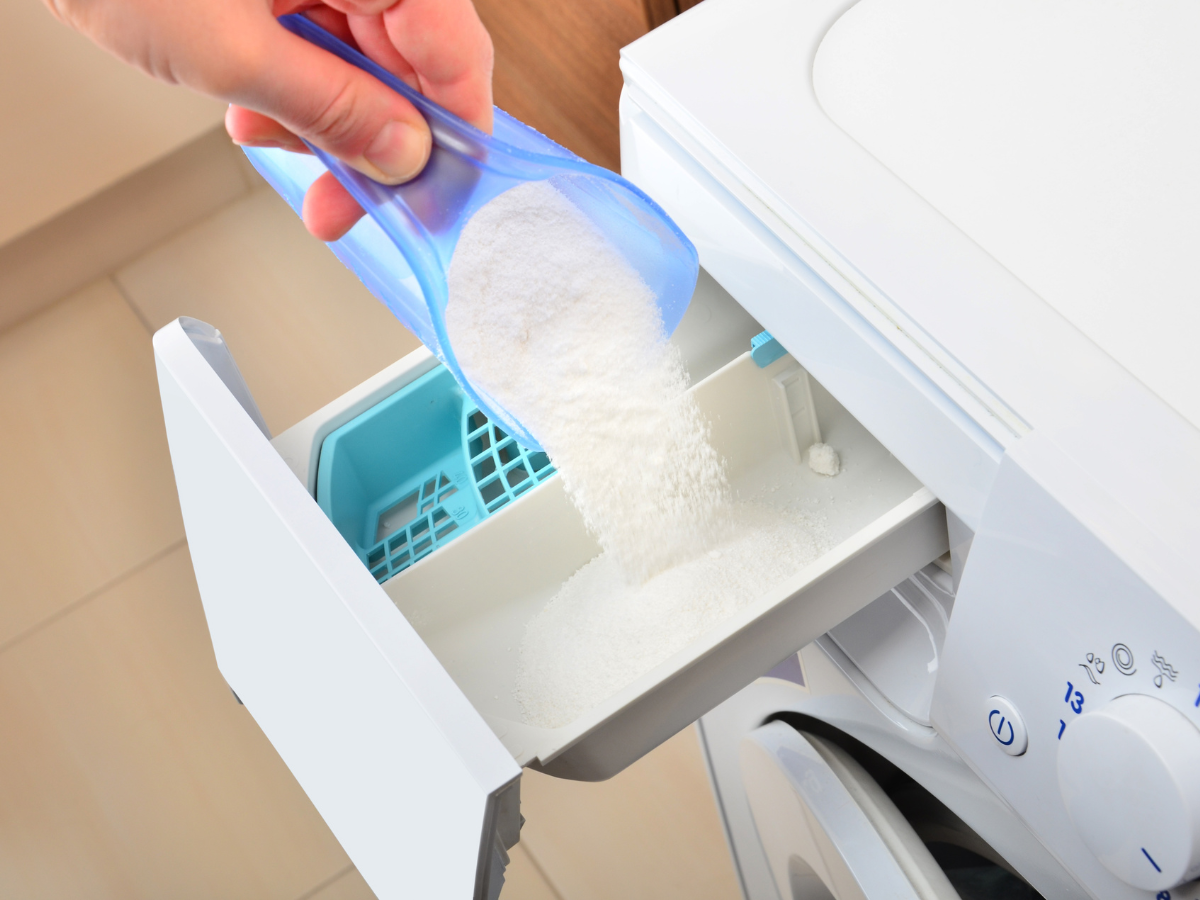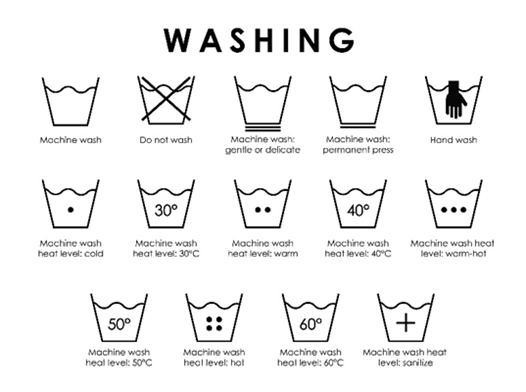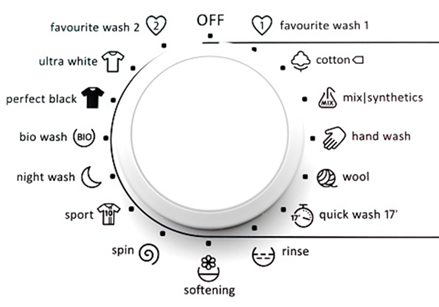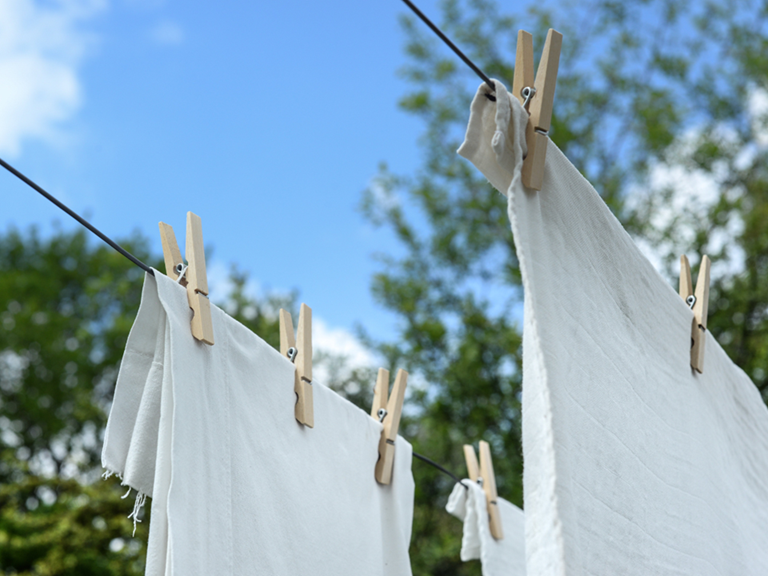How to Do Laundry for Beginners

Ever stared at your overflowing laundry basket, overwhelmed and not sure where to start?
Whether you’ve recently started doing laundry for yourself, or struggling with the confusion of the different settings, what detergent to use, or even how to stop the dye in your coloured clothes running and turning your best white shirt pink!
This article will not only provide a guide for all the above issues and more, but will also include some expert advice from the Bright & Beautiful team, with our top tips on tackling your laundry pile like a pro.
Sorting Your Laundry
We’ve all heard stories of a red sock ending up in the whites pile and turning the whole load pink, or the dye in your new jeans running, and turning everything a blueish grey. What a nightmare!
Sorting by Colour
Colour sorting is the easiest way to avoid this problem. Making piles of the main colours in your laundry basket and washing these together will mean any running dye won’t affect the colours in the wash. We recommend splitting your pile into whites, lights (beige, light grey and any pale colours) and darks (navy blue, black, dark grey). Then we have the problem colours like reds. Any main colour groups are best to wash on their own, to avoid the pigment transferring onto your other clothes.
Sorting Delicate Fabrics
Cottons, synthetic fibres and delicate fabrics (such as silk) should also be washed separately to avoid shrinkage and damage to the material, and bear in mind, some clothes may be dry clean or hand wash only. The care labels inside your laundry should help indicate which settings and temperatures should be used!
The guide below will help you decipher the most common symbols, found on most clothing labels.

And lastly, you’ll want to make separate piles for all your sheets, linens and towels, and any heavily soiled or stained items. Bed sheets and towels will take up a lot of room in your washing machine, and overfilling will result in an uneven or unsuccessful wash.
Pre-Treating Stains
We’ve all needed to do it, whether it be after spilling your morning coffee all over your freshly washed shirt, or the splash from a muddy puddle. Stains are almost guaranteed to happen at one point or another, but using the right pre-wash treatment will give you a head start on breaking down the culprit and having your clothes coming out of the machine looking good as new.
Each stain will need to be handled slightly differently, we’ve outlined some of our tried and tested methods for removing common stains below!
Grease and Oil Stains
Most washing up liquids contain a grease fighting element. Although this is intended for when you’re washing up dirty dishes, this also helps to draw the stain out from fabrics when doing your laundry.
Simply dilute your washing liquid with some warm water and apply to the stain to sit for 10-15 minutes, before putting in your washing machine as usual.
For harsher stains, use a toothbrush to gently rub the solution into the fibres, helping to penetrate the stain.
Red Wine Stains
Spilt red wine all down your favourite dress? You’re going to need to act quick, red wine is notorious for being one of the hardest stains to remove, so time is of the essence to stop your favourite item of clothing being sent to the bin.
First step will be to run the stain under warm water, or sparkling water if you have any, until the water runs clear. The bubbles in the carbonation will help to break down the stain before putting it in your washing machine. If the stain still looks scarily dark, try using a spot treatment product like the EcoVer stain remover to spot treat this before washing on the warmest setting your garment can handle.
For shop bought stain removal products, we recommend testing the product on a small, inconspicuous area of the clothing, to make sure there is no reaction or marks left before using on a larger area.
Understanding Your Washing Machine
Before diving into tackling your laundry pile, you’ll want to make sure you understand the type of machine you have, the different component and compartments, and the load capacity.
The most common types of washing machines will be your top-loading and front-loading machines. These are quite self-explanatory, with the name describing where you will find the door to open and put in your clothes or linens. You will also want to identify if your machine is a washer/dryer combi, these will have slightly different settings than the stand-alone washers.
Next up, you will need to locate your detergent drawer. This is where you will put your laundry powder or laundry detergent, so that it can be dispensed into your drum during the wash. Some machines may have the section labelled, but if yours doesn’t, refer to the user manual to find out where to put your detergent, prewash treatments, and any fabric softeners.
And finally, you’ll want to find out your load capacity, which is usually given by weight. Overloading your machine will stop the drum being able to effectively rotate, leaving you with an uneven wash, and potentially even causing damage to your machine.
Choosing the Right Detergent and Machine Settings
When it comes to choosing what to use to wash your laundry, your main options will be gels, powders and pods. They all work quite similarly, so which you pick will be mainly down to personal preference. However, there are a few things to bear in mind.
Powders and liquids can be messy to measure out, whereas capsules and tablets ensure you’re using the right quantity, without you having to worry. If you find your laundry is particularly stained or dirty, or you have children or family members with particularly messy jobs, you may benefit from a biological powder, or bio for short, as these can help shift tougher marks or stains.

Next up will be your washing machine setting. This will depend on the label on the clothing as to whether they are delicate items or need a cold-water wash to prevent shrinking and reduce static. Most loads will be okay on a standard or a quick wash if needed the same day, but make sure to check the care label to be safe.
Depending on the soil level of your garments, or if you’re using a large amount of prewash treatments or detergents, you may need to use an extra rinse before it comes out the washer.
And finally, we recommend finishing your wash cycle with a final spin and drain, to remove any excess water and help speed up your dry time.
Drying Your Clothes
Your drying method will probably vary based on the time of year. When the sun is shining, from late spring through summer, you’ll want to make the most of the warm rays and dry your washing outside. Whether that be on a pop-up rotary airer, or a classic washing line and pegs, the breeze and warm air will help to dry out your wet laundry in no time!

However, in the colder months, or days where the British weather means the sun isn’t quite shining enough to dry your clothes in summer, you’ll have to pick between air drying inside or using a tumble dryer if you have one. Air drying is a low-cost option and perfect if you don’t have space to store a tumble dryer. However, in the colder months you may struggle to get your clean laundry fully dry, which can lead to an unpleasant, damp odour on your clothes.
To ensure you get the best dry possible:
- Avoid overcrowding your dryer, spread out your clothes evenly to maximise airflow.
- Leave your dryer near sunlight, or by a radiator
- Utilise your airing cupboard for smaller items
Hanging your clothes correctly can also reduce wrinkles and save you the additional tasks of ironing afterwards!
Laundry Care Tips
Laundry can become a big, overwhelming task if you let it build up. Keeping on top of the washing for the colours you wear the most, will help you keep on top of this, and most importantly, stop you from waking up to an empty sock drawer before work!
Previously in this article, we mentioned about working quickly when it comes to red wine stains. However, best practice is to do this with all spills if possible! Leaving the spill to dry into the fabric will leave you at greater risk for stains, so rinsing the area with cool water as soon as possible and spot treating will help to keep your wardrobe stain free.
Lastly, we know running appliances can use a lot of energy, which is not only bad for your monthly bills but also the environment. Choosing a higher spin cycle will help reduce washing and drying time, and in turn lowering the energy consumption. Additionally, using biodegradable and eco-friendly laundry detergents will make sure your environmental footprint is as low as possible!
Don’t worry, we understand the simple sounding task can soon get complicated when thinking about spin cycles, fabric types, laundry labels and whether you should be using a cold or hot water temperature, but we hope this guide has helped to clear up some of the common questions for you!
And Don’t Forget
- Pre-treat any harsh stains before washing
- Sort your clothes (whites, lights, darks and colours)
- Check your garment labels for washing instructions
With these tips and a bit of time, we’re sure your next visit to the laundry room will be pretty straightforward, and you’ll be a laundry pro in no time!
Still Struggling?
Did you know that Bright & Beautiful offers full ironing and laundry services, that can even be incorporated as part of your regular housekeeping visits? Super convenient right?


